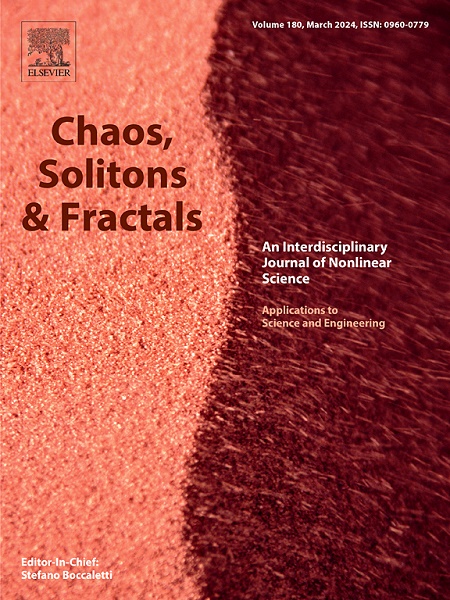The underlying nonlinear dynamics of strong coupling via entangled dark states
IF 5.3
1区 数学
Q1 MATHEMATICS, INTERDISCIPLINARY APPLICATIONS
引用次数: 0
Abstract
The interplay between dark states and strong coupling remains a crucial aspect of quantum light-matter interactions, offering new pathways for harnessing collective quantum phenomena. A key challenge, however, is understanding the fundamental mechanisms that drive strong coupling and its connection to quantum correlations. Here, we show that strong coupling in a plasmonic system emerges from the entanglement of two dark states, one associated with the uncoupled plasmonic mode and the other a low-energy dark state whose precise nature remains undetermined. Our experiments reveal that this interaction produces hybrid light-matter states through sum- and difference-frequency generation, a nonlinear process known to encode quantum correlations. By applying this framework to prior studies, we recover key system parameters with high accuracy, demonstrating the model's broad applicability. These findings suggest a deeper connection between strong coupling and quantum entanglement, providing new insights into nonlinear optics and quantum coherence. By revealing how dark-state interactions shape hybrid polaritonic states, this work advances the understanding of light-matter interactions and offers a potential pathway toward quantum information technologies.
通过纠缠暗态强耦合的潜在非线性动力学
暗态和强耦合之间的相互作用仍然是量子光物质相互作用的一个重要方面,为利用集体量子现象提供了新的途径。然而,一个关键的挑战是理解驱动强耦合及其与量子相关性的联系的基本机制。在这里,我们证明了等离子体系统中的强耦合来自两个暗态的纠缠,一个与未耦合的等离子体模式有关,另一个与低能量暗态有关,其确切性质尚不确定。我们的实验表明,这种相互作用通过和频和差频产生混合光物质状态,这是一种已知的编码量子相关性的非线性过程。通过将该框架应用于先前的研究,我们以较高的精度恢复了系统的关键参数,证明了模型的广泛适用性。这些发现表明强耦合和量子纠缠之间存在更深层次的联系,为非线性光学和量子相干性提供了新的见解。通过揭示暗态相互作用如何形成杂化极化态,这项工作促进了对光-物质相互作用的理解,并为量子信息技术提供了一条潜在的途径。
本文章由计算机程序翻译,如有差异,请以英文原文为准。
求助全文
约1分钟内获得全文
求助全文
来源期刊

Chaos Solitons & Fractals
物理-数学跨学科应用
CiteScore
13.20
自引率
10.30%
发文量
1087
审稿时长
9 months
期刊介绍:
Chaos, Solitons & Fractals strives to establish itself as a premier journal in the interdisciplinary realm of Nonlinear Science, Non-equilibrium, and Complex Phenomena. It welcomes submissions covering a broad spectrum of topics within this field, including dynamics, non-equilibrium processes in physics, chemistry, and geophysics, complex matter and networks, mathematical models, computational biology, applications to quantum and mesoscopic phenomena, fluctuations and random processes, self-organization, and social phenomena.
 求助内容:
求助内容: 应助结果提醒方式:
应助结果提醒方式:


